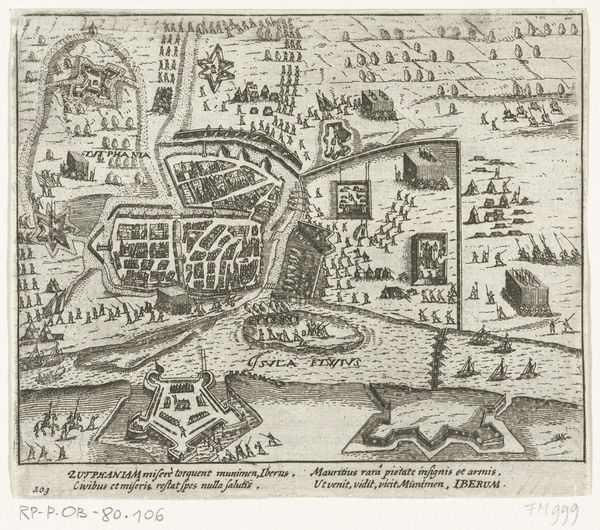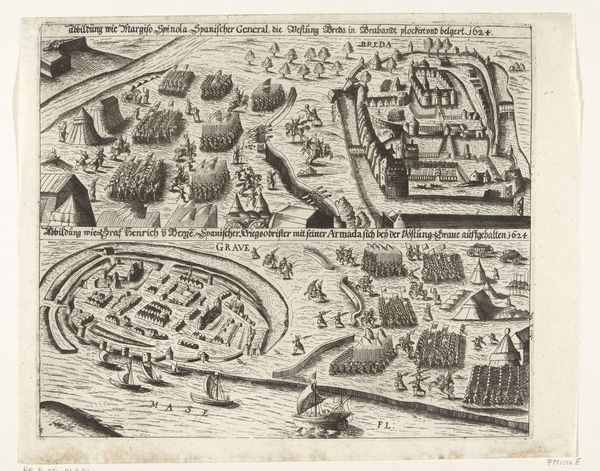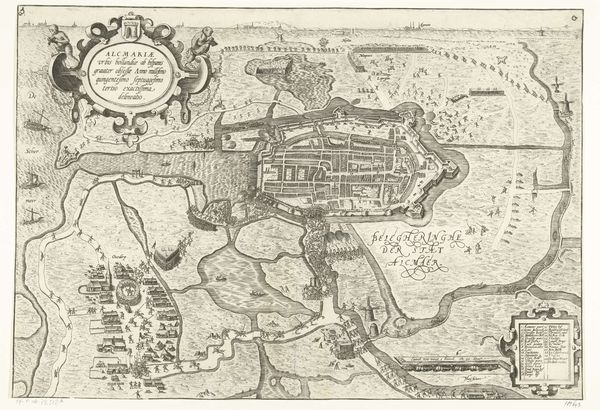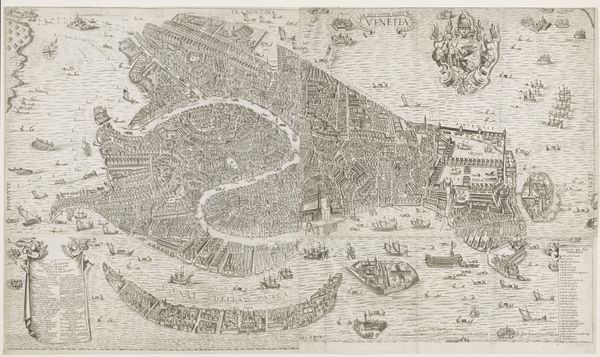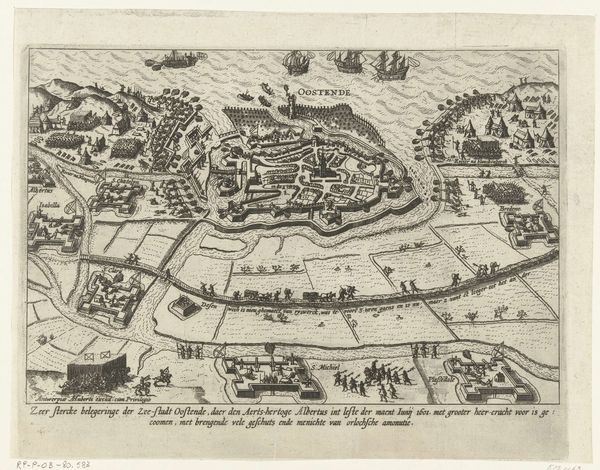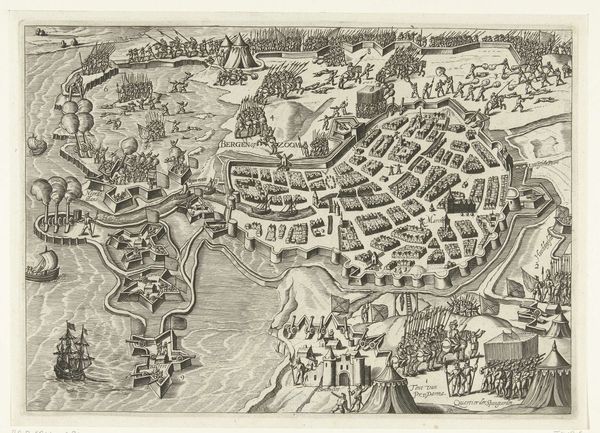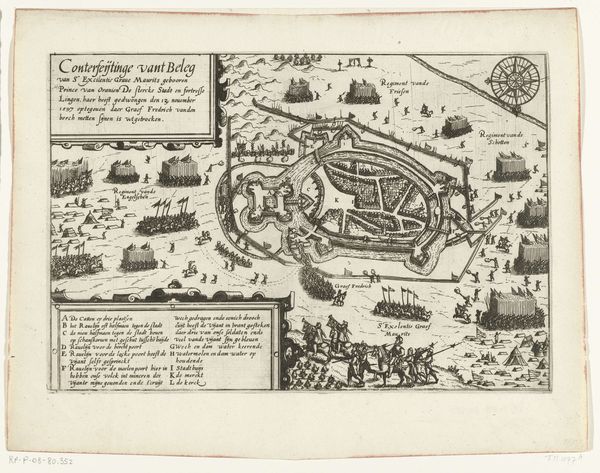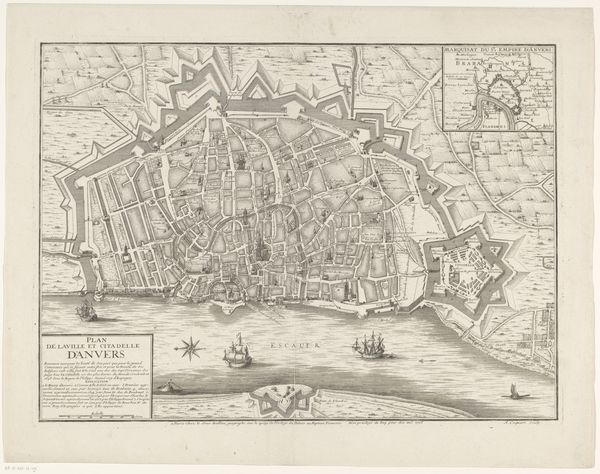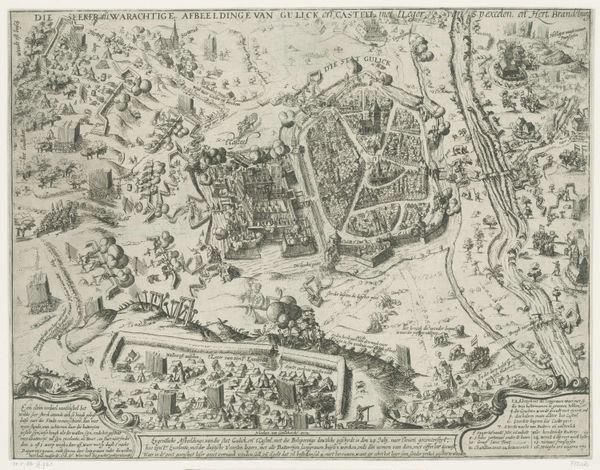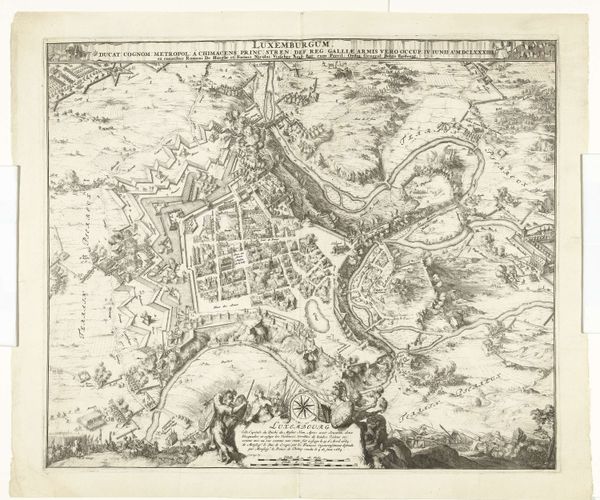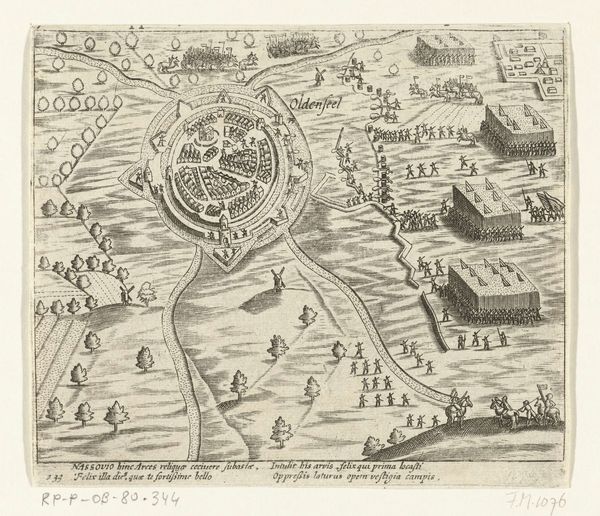
print, engraving
#
baroque
# print
#
cityscape
#
italian-renaissance
#
engraving
Dimensions: height 338 mm, width 430 mm
Copyright: Rijks Museum: Open Domain
Editor: Here we have Antonio Francesco Lucini's "Valletta," an engraving from 1665. I'm immediately struck by how meticulously the city is rendered; it almost feels like looking at a blueprint more than a portrait. What can you tell me about this piece? Curator: It's crucial to consider the function of such cityscapes. "Valletta" isn’t simply a visual record, but a statement of power and control. Engravings like these circulated widely, shaping European perceptions of the city, particularly its fortifications. Editor: Power, in what way? Curator: Consider Valletta’s history. Built by the Knights of St. John after the Great Siege of 1565, it represents a response to Ottoman expansion. The map highlights the city's military preparedness; every angle of the walls, every cannon position visible reinforces an image of impregnability. How might this image have influenced trade and migration to Valletta? Editor: So the map isn’t just showing what exists, but also performing a sort of propaganda? Curator: Precisely. Also consider Lucini’s intended audience. They would recognize symbolic visual cues connecting the city with power structures, designed to reinforce certain colonial perspectives. What symbols stand out to you? Editor: I see the coats of arms, angelic figures and compass at the upper corner...symbols of leadership and guidance perhaps? Curator: Yes! How do you think this image engages in the broader narratives of colonialism and religious conflict prevalent at the time? Editor: It sounds like this print offered both information and justification, a sort of 'manifest destiny' for its time. Looking at it now, it reminds us to consider the underlying message in everything we see. Curator: Exactly, the interplay of art, power, and representation in shaping our understanding of history remains crucial.
Comments
No comments
Be the first to comment and join the conversation on the ultimate creative platform.
